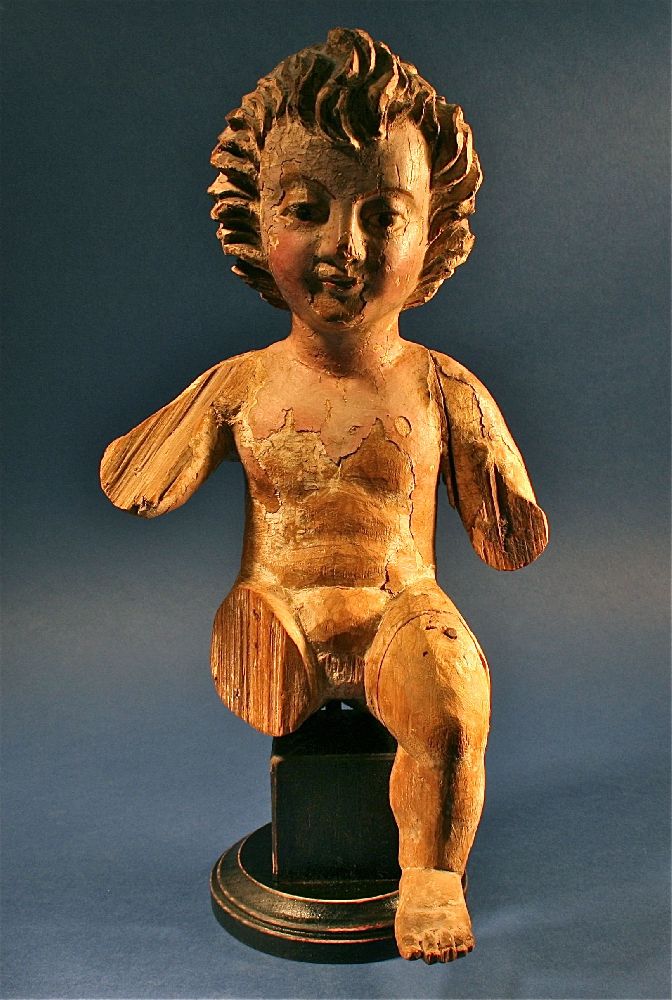

Title: Religious Spanish Colonial Polychrome Wooden Carved Putti Santo
Shipping: $35.00
Artist: N/A
Period: 18th Century
History: N/A
Origin: N/A
Condition: Good
Item Date: 1700 to 1900
Item ID: 5763
Antique Hand Carved Spanish Colonial Polychrome Wood Santo Putti Figure late 18th/early 19th c., losses to carving, heavy signs of age, losses to paint, see images. Hand carved Spanish colonial wood. Antique carved wooden "santo" religious Putti figure. We are committed to enhancing our customer’s lives by discovering creating, and pointing out only the best art we can find in the world today. We Are Taste-Makers, Art Advisers, Consultants & Publishers of Great Stories.
Link: http://en.wikipedia.org/wiki/Putti
A putto (plural putti, /ˈpʊti/ or poo-tee)[1] is a figure in a work of art depicted as a chubby male child, usually nude and sometimes winged. Putti are distinct from cherubim. In the plural, "the Cherubim" refers to the biblical angels. While "cherubs" represent the second order of angels, putti are secular and present a non-religious passion. However, in the Baroque period of art, the putto came to represent the omnipresence of God. A putto representing a cupid is also called an amorino (plural amorini).
The more commonly found form putti is the plural of the Italian word putto. The Italian word comes from the Latin word putus, meaning "boy" or "child". Today, in Italian, putto means either toddler winged angel or, rarely, toddler boy.
Putti, in the ancient classical world of art, were winged infants that were believed to influence human lives. In Renaissance art, the form of the putto was derived in various ways including the Greek, Eros, or Roman, Amor/Cupid, the god of love and companion of Aphrodite or Venus; the Roman, genius, a type of guardian spirit; or sometimes the Greek, daemon, a type of messenger spirit, being halfway between the realms of the human and the divine.